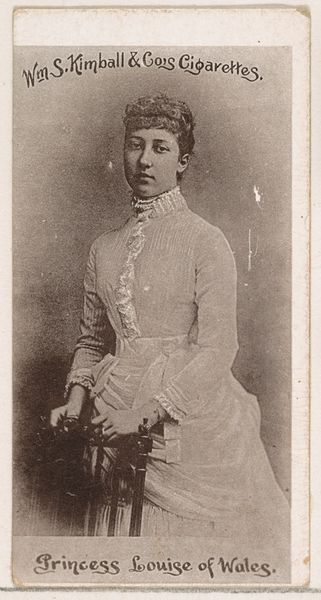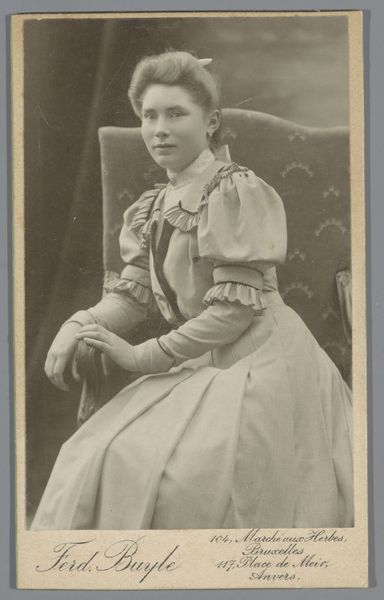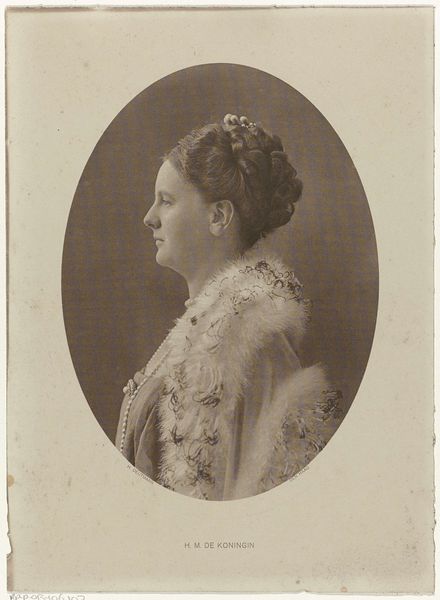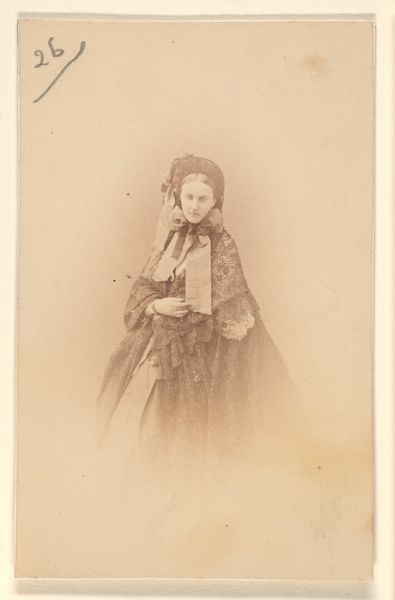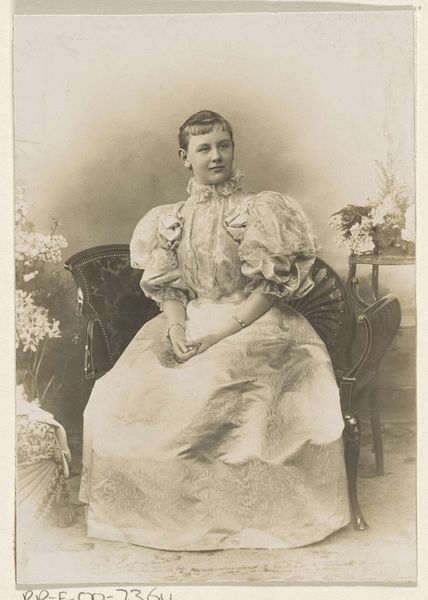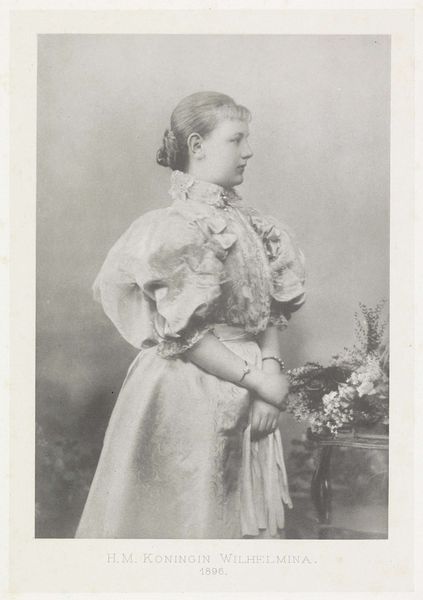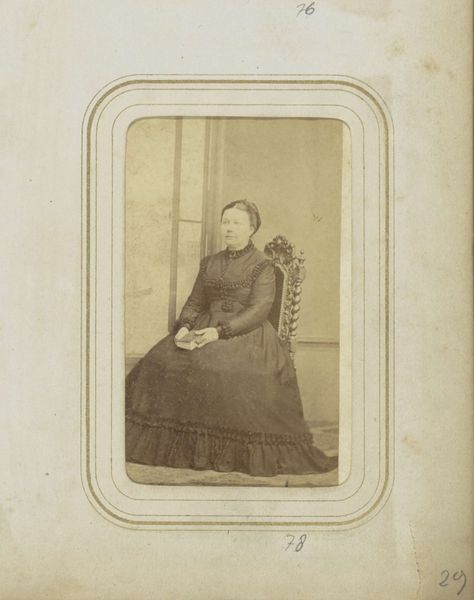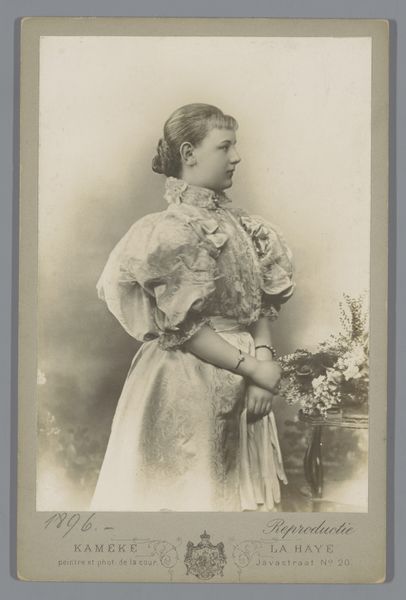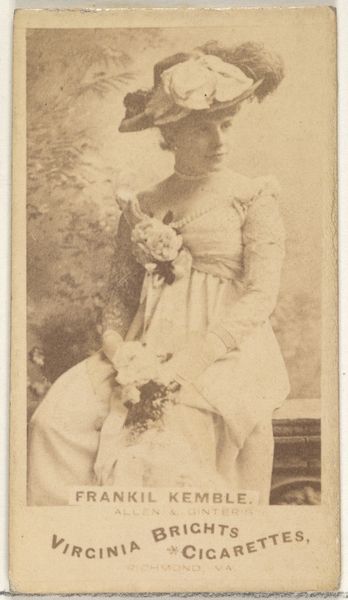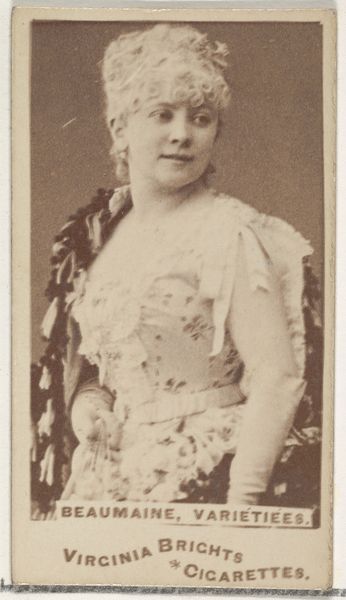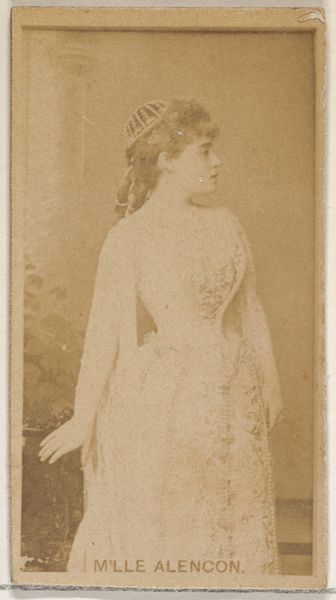
silver, print, photography
#
personal snap photobooth
#
16_19th-century
#
silver
#
wedding photograph
#
photo restoration
# print
#
wedding photography
#
war
#
photography
#
historical fashion
#
wedding around the world
#
england
#
cultural celebration
#
men
#
wedding dress
#
celebration photography
#
bridal fashion
Dimensions: 29.4 × 24 cm (image/paper); 50 × 43.8 cm (image/paper
Copyright: Public Domain
Editor: Here we have a silver print photograph, *Anne Thackeray Ritchie,* taken around 1870 by Julia Margaret Cameron. The softness of the image creates such a dreamy, almost ethereal mood. What stands out to you? Curator: It’s interesting to consider the materiality here. Silver prints like this one weren't mass-produced in the same way as later photographic prints. Each one was a result of specific labor, from coating the paper to the darkroom process itself. Knowing this was created during a time when photography was still closely tied to chemistry and manual processes makes it far more special, don’t you think? Editor: I hadn't thought of it that way. I suppose I just saw it as an image, and not a physical object created through a series of chemical processes. What was the function of that level of manual labor for women at this time? Curator: Exactly! Think about the labor involved in Anne Thackeray Ritchie’s dress as well – the fabrics, lace, the individual pearl beads around her neck. These aren’t just aesthetic choices, they reflect a whole system of production and consumption tied to Victorian ideals of womanhood. Who produced these things, and under what conditions? Editor: So, by looking at the materials and the making of the artwork, we are gaining an insight into the labor and social hierarchies of the time. I appreciate the invitation to explore the history inscribed in the object! Curator: Precisely. These photographs capture not just the sitter's likeness, but the fingerprints, if you will, of an entire socio-economic system.
Comments
No comments
Be the first to comment and join the conversation on the ultimate creative platform.
